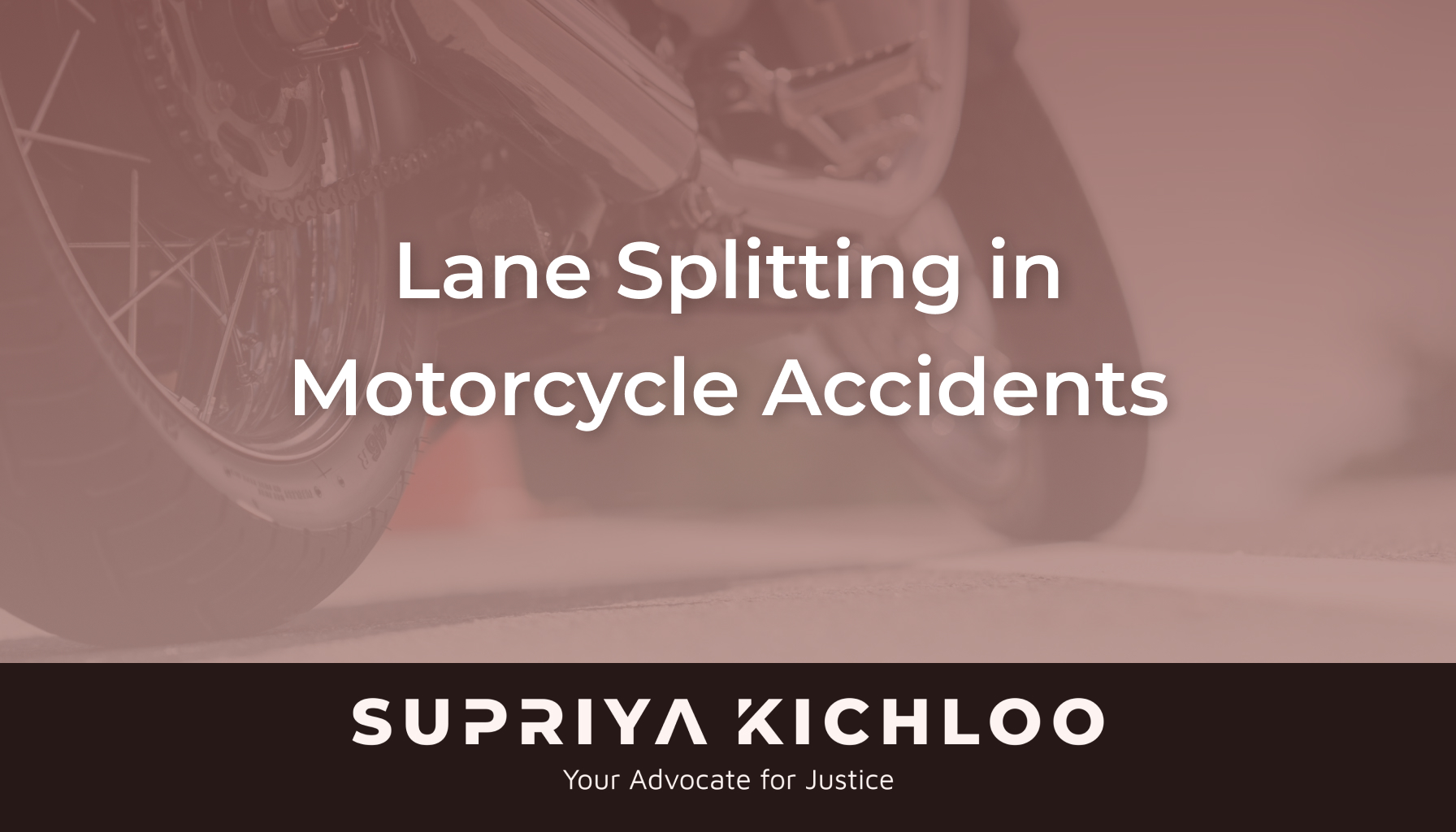Car accidents in New York City are often chaotic, involving sudden decisions, congested roads, and unpredictable traffic patterns. In many cases, assigning blame is straightforward—one driver ran a red light or rear-ended another at a stoplight. But what happens if both drivers are at fault in an accident? New York law recognizes that more than one person can contribute to a crash, and in those cases, liability and compensation are handled differently than in single-party fault scenarios.
Understanding New York personal injury law is critical if you’re trying to protect your legal rights. Read on to learn what happens if both drivers are at fault in an accident, how to navigate an insurance claim, or how to win an at-fault accident dispute.
At the Law Offices of Supriya Kichloo, P.C., we help accident victims understand these complex cases. With over a decade of experience and a commitment to client-focused service, we provide the clarity and support you need.
Can Both Parties Be at Fault in an Accident?
Yes, both parties can be at fault in an accident, and it’s more common than many realize. Car accidents don’t always involve a single reckless or distracted driver. Often, both drivers make decisions or take actions that contribute to the collision. For example:
- One driver speeds through a yellow light while the other fails to yield;
- A driver changes lanes without signaling while the other is texting and doesn’t react in time;
- Both drivers are attempting to merge into the same lane at the same time; or
- One driver stops short while the other is tailgating.
In these cases, determining exactly how much fault each driver bears becomes essential for resolving the legal and financial aftermath of the crash.
New York’s Pure Comparative Fault Rule
New York follows a legal principle known as pure comparative fault, which is central to understanding what happens when more than one person is responsible for an accident. Under this rule, fault does not bar financial recovery. However, the percentage of fault reduces each one’s recoverable compensation.
For example, if you are found to be 40% responsible for an accident and your total damages are $100,000, you could still recover $60,000. This framework allows injured drivers to seek financial recovery even if they were also responsible for the crash. It also makes fault allocation a critical part of any accident case, whether you’re dealing with insurance claims or a potential lawsuit.
When both drivers may be at fault, insurance companies, law enforcement, and attorneys will look closely at the accident’s facts. The fault is determined by examining the following:
- Police reports,
- Crash scene photos,
- Vehicle damage patterns,
- Surveillance or dashcam footage,
- Witness statements,
- Medical documentation,
- Paperwork showing lost wages,
- Traffic laws and right-of-way rules, and
- Expert accident reconstruction analysis.
Each driver’s actions leading up to the collision will be reviewed. For instance, if one driver was speeding but the other failed to yield, the fault may be split according to how those decisions contributed to the crash.
It’s important to remember that insurance companies have a financial incentive to shift more of the blame onto you. Having an attorney on your side can help ensure the facts are fairly evaluated and that your contribution to the accident isn’t exaggerated.
If you’re involved in an accident where you think both you and the other driver may have contributed, it’s essential to take the proper steps immediately:
- Call 911. Report the accident to law enforcement and seek medical attention.
- Exchange information. Get the other driver’s contact and insurance details.
- Document the scene. Take photos of the vehicles, street signs, damage, and road conditions.
- Get witness statements. If anyone saw what happened, ask for their contact information.
- Avoid admitting fault. Do not apologize or speculate about blame at the scene—it may be used against you later.
- Report the accident to your insurance company. Stick to the facts without offering unnecessary opinions.
- Consult a car accident attorney. An experienced lawyer can help protect your interests and ensure your story is heard.
Being proactive in the hours and days following an accident can significantly improve your chances for a positive outcome.
Many people ask how to win an at-fault accident case or whether it’s even worth pursuing a claim if they were partially responsible. The answer depends on the details of your case, but the key takeaway is this: being partially at fault does not prevent you from seeking compensation.
An experienced attorney can help you build a case that shows the other driver’s responsibility and protects your right to a fair recovery. This case-building may involve consulting experts, negotiating with insurers, or pursuing litigation if necessary.
How the Law Offices of Supriya Kichloo, P.C. Can Help
When fault is shared in a car accident, the legal process becomes more complicated—but you don’t have to go through it alone. At the Law Offices of Supriya Kichloo, P.C., we take a hands-on, individualized approach to every case. We listen to your story, help you understand your options, and guide you through every step of the process.
Attorney Supriya Kichloo brings over a decade of legal experience and a multicultural perspective to her practice. Fluent in English, Hindi, and Kashmiri, she helps clients from diverse backgrounds navigate the legal system with clarity and confidence.
Our firm will:
- Investigate the accident thoroughly and gather key evidence,
- Analyze comparative fault and push back against unfair blame,
- Handle all communication with insurance companies, and
- Advocate for your right to fair compensation—whether in settlement or litigation.
We are committed to helping you navigate this process with clarity and compassion so you can focus on healing while we handle the legal details.
Contact Us Today for a Free Case Evaluation
If you’ve been in a car accident where you and the other driver may share fault, you may still be entitled to compensation. However, time is critical, and the steps you take early on can shape the outcome of your case.
At the Law Offices of Supriya Kichloo, P.C., we offer a free consultation to help you understand your legal position and the best path forward. We’re here to listen, explain, and advocate for you every step of the way.


